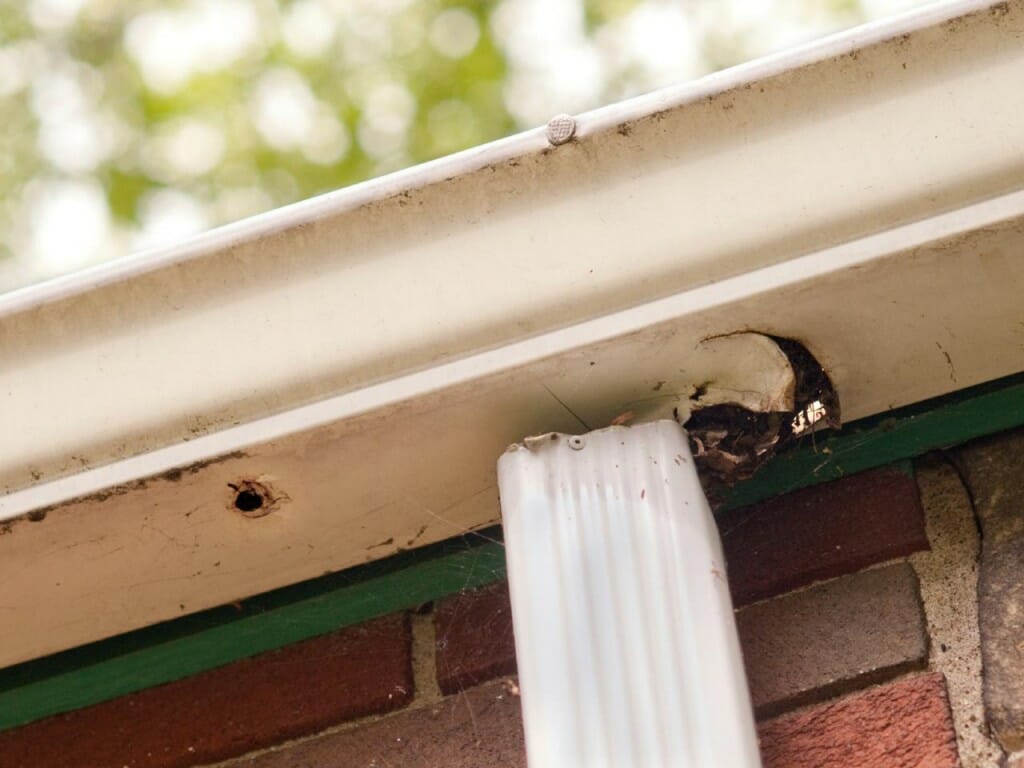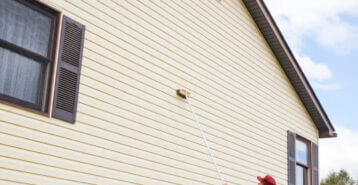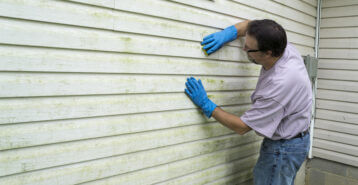Are you doing a gutters project?
Modernize can pair you with three to four pros in your area, so you can compare options and save time and money.
Have you ever wondered where all that water goes during heavy rainstorms, or once all the snow melts at the end of winter?
For most homes, it doesn’t run directly from the roofing to the ground. Instead, it first routes through a series of gutters and downspouts, which direct the water away from basements, decking, and other surfaces and direct it to the ground. This prevents it from seeping into your home and creating water damage.
As long as your gutters and downspouts are operating properly, you will not have to worry about water pooling and leaking in areas it shouldn’t. But gutters and downspouts do not perform properly without regular maintenance. That is why it is important to learn what steps you need to take each year on how to clean your gutters and downspouts, to keep them working efficiently.
Cleaning Out Your Gutter System
One of the most important tasks for maintaining the series of gutters and downspouts around your home is keeping them free of leaves, branches, clogs, and other debris. If you are willing to take the time to clean out the system, it will function properly and help keep your home in good shape throughout the year.
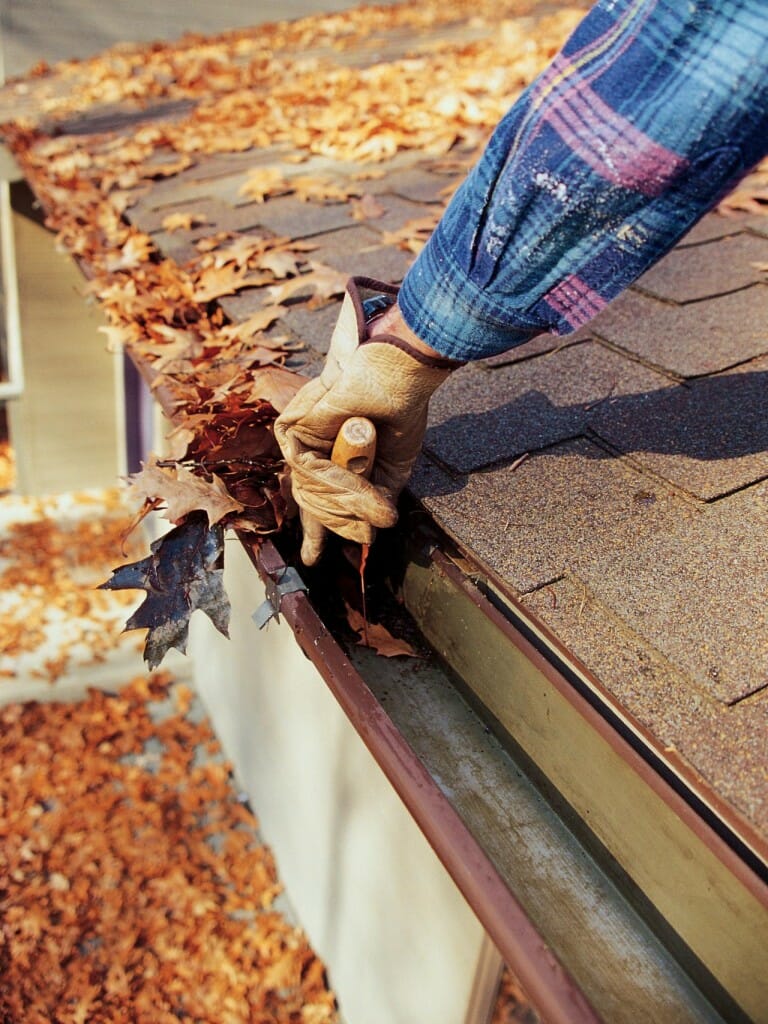
Avoid Clogs at All Costs
If you do not clean gutters properly, they will eventually clog, causing water to flow over top of them and onto your home. This can cause damage to different areas of your home, and even lead to damaging leaking inside. In addition to checking for rainwater fill-up, it’s important to keep an eye on gutters for ice dams and leaks during the winter, which should be serviced by a professional.
Clean Twice a Year
For most homes, a twice-yearly cleaning of gutters and downspouts will do—once near the end of spring, and again as fall draws to a close and the leaves have fallen. These are the typical times when clogs occur and when you can do the most good for your home’s gutters.
However, if you live in a particularly wooded area, a more frequent check for debris is advised. It is also recommended that you prep your gutter system before any anticipated heavy rainfall or storms.
How to Clean Gutters and Downspouts
Cleaning out gutters and downspouts is relatively simple, but you must be comfortable using a ladder. Climb up on a ladder set on the side of your home and scoop out any debris you find in the gutters into a bucket. Continue this process until all debris is removed from the gutters. To finish, use a garden hose equipped with a spray nozzle and flush out the system to remove any excess or stuck debris.
Checking the System
After cleaning the gutters, you will want to check for additional problems. When you flush the system with water, look for any leaks or pools. If the water flows naturally without slowing at any point, you should be finished with your gutter maintenance. Pooling water signifies a blockage somewhere, and leaking means that there’s a hole or a failed seal in the system. If you are unsure whether your gutters are cleared, we recommend connecting with a professional to avoid any issues down the road.
Handling Downspout Clogs
Water pooling at the beginning of a downspout means you have a clog going down the tube. This is a serious issue that must be addressed.
Utilize a plumber’s drain snake or auger to go through the downspout and break up the clog. Run the line through the downspout several times at different angles, wiggle it around, and turn the line at locations where you notice any pressure. This is most likely the site of the clog.
Find the Right Contractor for Your Gutters Project
Whether you’re ready to begin your project now or need some expert advice, our network of contractors are here to help. With a few simple questions, we’ll find the best local professionals for you
After cleaning out the spout using your snake, run fresh water through the downspout to push out the now-loose debris and free up the passageway. If no water pools during the flushing process, you have successfully cleared out the blockage.
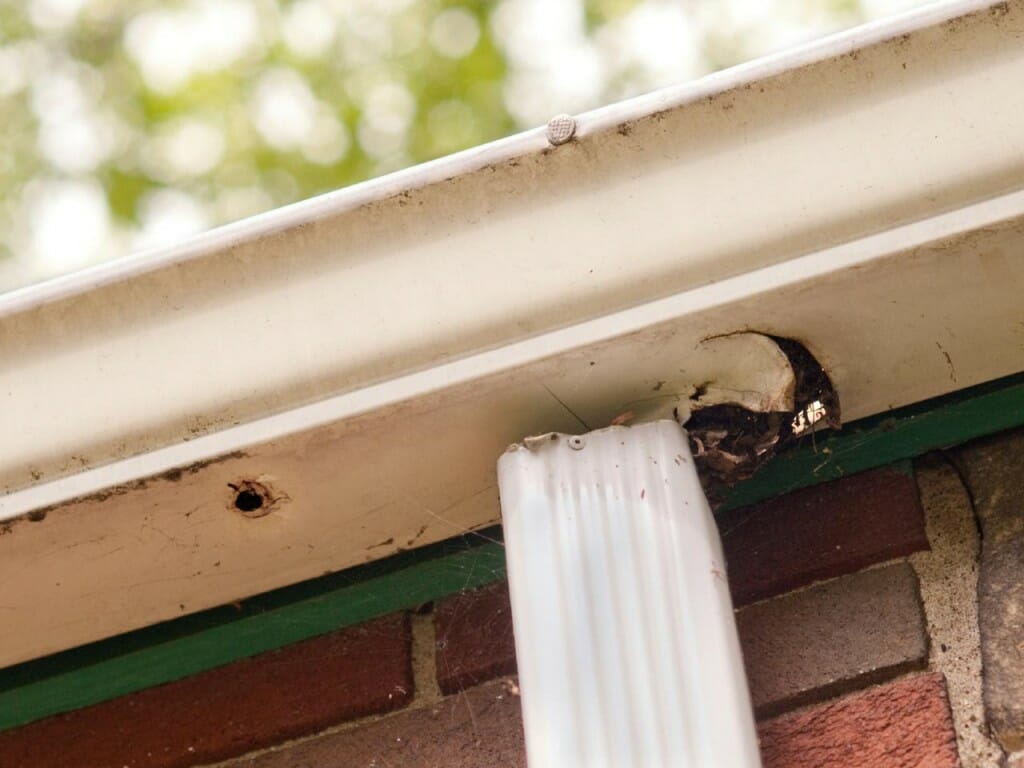
Taking Care of Potential Holes
With years of wear and tear, holes will eventually develop in either your home’s downspouts or gutters. The only way to locate them is by using the “flush trick” to get water flowing through the system. When you do this, have someone watch along the gutters for any potential leaks. If you notice any leaks along the way, take note of their locations for later inspection.
Sealing up Pinholes
Over time, it is very common for pinholes—caused by rust and corrosion—to develop in a gutter or downspout. These are not a huge issue, as long as you can locate them effectively and seal them up. The holes can be closed with simple roofing cement, so it is good to keep some on hand at all times.
To seal pinholes, clean them off using a stiff wire brush, and then apply a small bit of roofing cement over the hole. Use a putty knife to smooth over the application, so that water and debris can flow smoothly without anything catching as it moves.
Sealing Larger Holes
When dealing with larger holes in the gutters of your roofing system, you’ll want to patch the problem area with metal flashing. Clean out the area several inches around the hole thoroughly with a stiff wire brush, so that the roofing cement can adhere properly. Then, take the roll of flashing material, preferably made from the same metal as your gutters to prevent corrosion, and cut to size so it is a couple of inches wider and longer than the hole. Set the patch in place on the inside of the gutter, and seal it in two different locations.
First, put roofing cement under the patch and press it firmly in place to lock it into position and to keep debris from running under the patch. Then, put a line of roofing cement over top of each of the outside seams of the flashing patch, and use the putty knife to feather the cement. Use the cement to create a ramp that is flush with the gutter on one end, and goes up over the patch and then down flush with the gutter once again. The water and debris should flow over the patch freely without catching or running underneath it.
If you get a large hole in a downspout or an elbow connection of your system, it is better to just replace the specific section than trying to replace it entirely.
How Much Does it Cost for Professional Gutter Cleaning?
Though gutter cleaning and maintenance is typically an easy DIY job, some homeowners will want to let a professional handle it. Opting for a professional gutter cleaning service provides a number of benefits. You will save yourself the time and effort of a tedious weekend job, not to mention ensure the job is done thoroughly and properly. The job is also relatively low cost and only needed twice to three times per year.
You can expect professional gutter cleaning to cost $0.42 to $0.77 per linear foot of guttering on your home. For the average 1,600-square-foot home, this would cost about $100 per session. Learn more about gutter replacement and cleaning costs. Get in touch with a gutter professional to ask about local cleaning costs in your area.
Find the Right Contractor for Your Gutters Project
Whether you’re ready to begin your project now or need some expert advice, our network of contractors are here to help. With a few simple questions, we’ll find the best local professionals for you
Reviews from Real Homeowners
Welcome to Homeowner Resources! We are the Modernize blog. Modernize pairs more than 3 million homeowners a year with pre-vetted contractors in their area. This blog started because we believe homeowners should know everything about their homes, from how their HVAC works to which front door colors they might love. On Homeowner Resources, you can find information on every part of your home, right down to how you can negotiate with contractors to get the best price. Here's more about the blog.
Need a contractor? Learn more about how Modernize finds the right pro for you.
